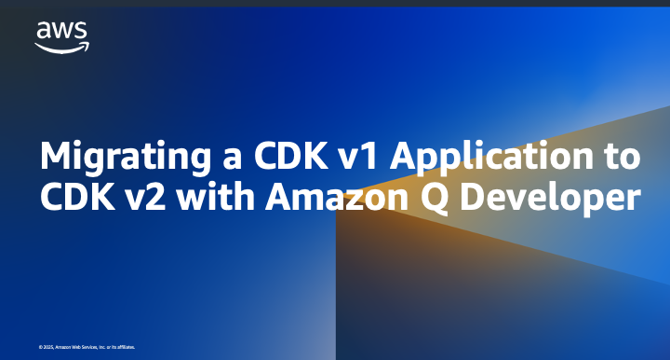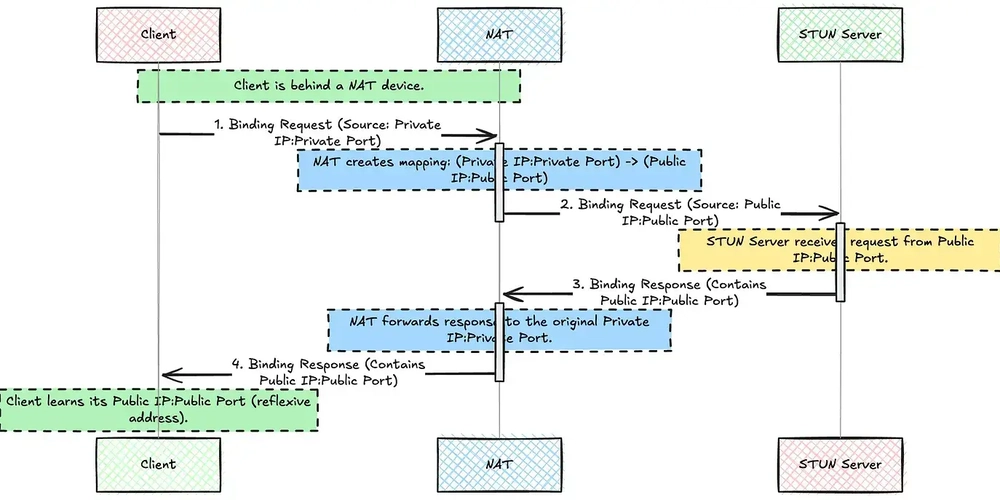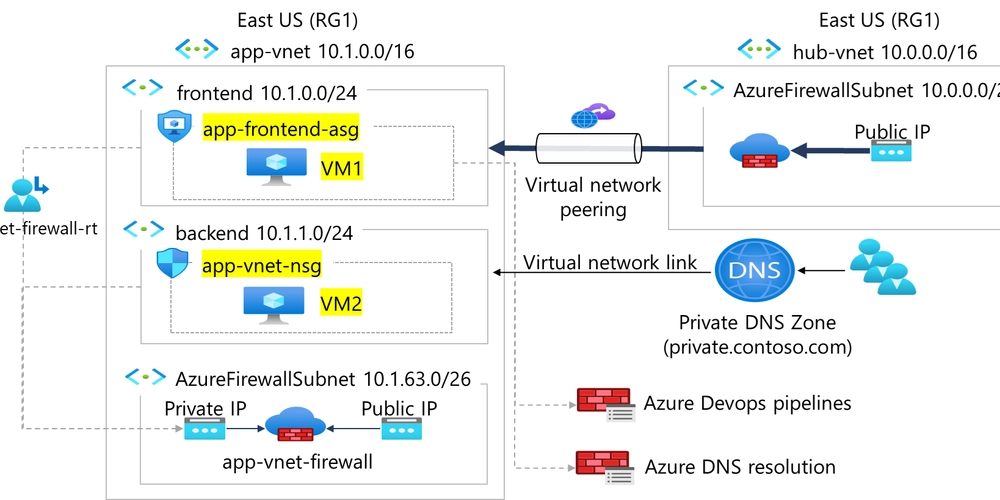Devops News
Amazon
421

Image Credit: Amazon
Migrating a CDK v1 Application to CDK v2 with Amazon Q Developer
- AWS CDK is a framework to define cloud infrastructure in code and provision it through AWS CloudFormation, and as of June 1, 2023, version 1 is no longer supported.
- To upgrade to AWS CDK version 2, utilizing Amazon Q Developer, an AI-powered assistant for software development teams, can enhance efficiency and accelerate IaC development.
- Prerequisites for migrating from CDK v1 to v2 include an AWS Builder ID, supported IDE like Visual Studio Code, AWS Toolkit IDE extension, Nodejs, and both CDK versions.
- The migration process involves steps like updating dependencies, import statements, debugging issues using Amazon Q Developer, and deploying the application with CDK v2.
- Amazon Q Developer not only aids in the migration process but also offers code review functionality and can generate documentation for projects.
- By leveraging Amazon Q Developer and upgrading to AWS CDK v2, teams can automate IaC development, enhance code quality, and scale their AWS environments efficiently.
- AWS CDK v2 provides a consolidated library with better performance and support, making infrastructure management easier and more reliable.
- Authors of the article include Dr. Rahul Sharad Gaikwad and Devops Consultants Vinodkumar Mandalapu and Tamilselvan P, with expertise in cloud migration, automation, and deployment.
- The collaboration of Amazon Q Developer and AWS CDK v2 can streamline the upgrade process, ensuring secure and efficient cloud infrastructure aligned with the latest AWS innovations.
- Additional resources provided include an Amazon Q Developer Workshop, User Guide, AWS CDK Workshops, and guidance on deploying a Serverless web application with AWS CDK.
Read Full Article
25 Likes
Kubernetes
368

Kubernetes v1.33: Storage Capacity Scoring of Nodes for Dynamic Provisioning (alpha)
- Kubernetes v1.33 introduces a new alpha feature called StorageCapacityScoring for pod scheduling.
- StorageCapacityScoring adds a scoring method to schedule pods on nodes with the most or least available storage capacity.
- Enabling this feature requires configuring node priorities based on storage utilization using the shape parameter.
- StorageCapacityScoring feature aims to maximize resource utilization by filling up nodes more sequentially based on storage capacity.
Read Full Article
22 Likes
Dev
430

Image Credit: Dev
Don’t Wait for Users to Complain: These Two Bad Boys Got You Covered
- Gatus and ntfy are tools that help monitor endpoints and provide real-time alerts to prevent service issues before they are noticed.
- Gatus is a self-hosted tool that checks endpoint health and triggers alerts through ntfy to notify users instantly.
- One can set up Gatus to monitor service status, integrate ntfy for alerts, and secure access with basic authentication in a simple process.
- Gatus enables defining endpoints in YAML to check their health and trigger alerts via various channels without vendor lock-in.
- Ntfy offers push notifications to mobile devices, terminals, and browsers through simple HTTP requests and is open-source.
- Users can self-host ntfy and add customizations for access control, topics, and permissions with ease.
- A working config.yaml example is provided for Gatus with ntfy integration to monitor an endpoint and send alerts upon failure.
- For Gatus, a quick reset script is recommended to stop and reset the container when needed for redeployment.
- Both Gatus and ntfy offer lightweight, open-source solutions for monitoring services and delivering instant alerts, suitable for small teams or internal infrastructure monitoring.
- LiveAPI is another tool mentioned that helps document backend APIs conveniently and quickly generate interactive API documentation.
Read Full Article
25 Likes
Dev
255

Image Credit: Dev
Vector: A lightweight tool for collecting EKS application logs with long-term storage capabilities
- Vector is a high-performance observability data pipeline tool by Datadog for collecting, transforming, and routing logs, metrics, and traces to various vendors.
- An architecture is presented to collect application logs from Amazon EKS via Vector, store them in Amazon S3 for long-term retention, and query them using AWS Glue and Amazon Athena.
- Steps include creating an S3 bucket, IAM policy for Vector Agent, EKS cluster, deploying a log generator application, and deploying Vector Agent to interact with EKS cluster logs.
- Vector's Helm Chart values.yaml file is customized for Kubernetes logs source, transforms using VRL, and sinks to AWS S3 destination.
- Logs are crawled from S3 to AWS Glue for creating database tables, followed by querying logs via Amazon Athena with a provided SQL statement.
- Cleanup involves using eksctl to delete the EKS cluster stack after completion of tasks.
- The demonstration showcases using Vector for collecting logs on EKS, storing and analyzing logs with AWS services, and highlights the capabilities of AWS Glue and Amazon Athena.
Read Full Article
15 Likes
Discover more
- Programming News
- Software News
- Web Design
- Open Source News
- Databases
- Cloud News
- Product Management News
- Operating Systems News
- Agile Methodology News
- Computer Engineering
- Startup News
- Cryptocurrency News
- Technology News
- Blockchain News
- Data Science News
- AR News
- Apple News
- Cyber Security News
- Leadership News
- Gaming News
- Automobiles News
Microsoft
387

Image Credit: Microsoft
Packaging and Publishing a .NET MAUI Library with GitHub Actions
- This article focuses on packaging and publishing a .NET MAUI Library using GitHub Actions.
- The workflow includes versioning, building, packaging, signing, and pushing the NuGet package.
- Versioning is handled dynamically using the major version and GitHub run ID.
- Dotnet commands are used to build and pack the .NET project in the workflow.
- Secure packaging is achieved by signing the package for content integrity verification.
- The workflow demonstrates pushing the package to NuGet.org or Azure DevOps internal feed.
- Secret values like API keys are securely stored and accessed using GitHub Secrets.
- GitHub Actions allows for automating processes like creating a GitHub Release.
- The workflow is customizable and extendable for complex requirements.
- For more details and samples, visit dotnet/maui-samples and explore further.
Read Full Article
23 Likes
Dzone
377

Image Credit: Dzone
Building Scalable and Resilient Data Pipelines With Apache Airflow
- Apache Airflow is essential for developing scalable and fault-tolerant data pipelines for handling terabytes of daily data generated by enterprise SaaS applications.
- The article delves into advanced techniques and best practices for developing resilient and observable Airflow workflows beyond basic introductory concepts.
- Enterprise SaaS administration poses challenges in monitoring, administration, and understanding application usage, especially with increasing unstructured data volumes and real-time visibility needs.
- Organizations require powerful Admin Insights pipelines to gain clear insights into application usage, enabling efficient resource management, effectiveness, and compliance.
Read Full Article
22 Likes
TechCrunch
278

Image Credit: TechCrunch
Cast AI raises $108M to get the most out of AI, Kubernetes and other workloads
- Cast AI, a startup focusing on optimizing workloads for AI and other tasks, has raised a $108 million Series C funding round to expand its business in core markets and enhance research and development.
- The company aims to improve efficiency in GPU utilization and workload distribution across GPUs to accommodate more workloads.
- Cast AI, based out of Miami, is heavily focused on European development locations and boasts 2,100 customers, including companies like Akamai, BMW, and HuggingFace.
- The startup integrates with major cloud providers and helps analyze cloud and on-premise capacity to optimize cost-performance ratios in workload distribution.
- With only 10% of CPUs and 23% of memory being utilized on average, Cast AI addresses the need for better resource allocation amidst a shortage of processors for AI models.
- In its Series C round, G2 Venture Partners and SoftBank Vision Fund 2 lead the investment, with notable backers like Aglaé Ventures and previous investors participating.
- Cast AI is collaborating with industry giants like OpenAI and Crusoe Energy on projects such as the Stargate AI infrastructure, aiming to facilitate efficiency in AI data centers.
- The company was founded by Yuri Frayman, Leon Kuperman, and Laurent Gil, with a background in machine learning startups and cloud-based cybersecurity ventures.
- Cast AI's initial focus was on optimizing cloud use and allocation for Kubernetes workloads, but it has since seen significant growth and interest in its AI-related services.
- SoftBank Investment Advisers noted that Cast AI is redefining cloud efficiency during a surge in infrastructure demands, while investors recognize the company's pioneering work in automation.
- With its history of developing automation technologies, Cast AI is recognized as a leading player in cloud efficiency and workload optimization in the era of AI advancements.
Read Full Article
16 Likes
Siliconangle
335

Image Credit: Siliconangle
Cloud optimization startup Cast AI raises $108 million to achieve ‘almost unicorn’ valuation
- Cloud optimization startup Cast AI raised $108 million in a Series C round, bringing its total funding to $181 million.
- The funding was led by G2 Venture Partners and SoftBank Vision Fund 2, putting Cast AI at an 'almost unicorn valuation.'
- Cast AI specializes in automating deployments of Kubernetes orchestrator to optimize cloud infrastructure, resulting in significant cost savings.
- The company introduced AI Enabler to optimize GPU usage, which has been well-received by Fortune 500 companies. The CEO mentioned that this funding round might be the last as the company could be profitable already.
Read Full Article
19 Likes
Alvinashcraft
13

Dew Drop – April 30, 2025 (#4410)
- Top links shared on Dew Drop for April 30, 2025 include various topics such as coding, Azure servers, Docker Desktop updates, Visual Studio 2022 release notes, Kubernetes updates, Blazor application enhancements, .NET MAUI usage, AI insights by Microsoft and Google, AI-powered security fixes, GitHub Copilot updates, and more.
- The AI section covers Azure AI Foundry insights, OpenAI updates, AI accessibility, AI toolkits, and Microsoft's AI contribution, including enhancing customer experience with AI and creating custom chat AI.
- In design, methodology, and testing, topics include app crash testing using REMO, hidden costs of inaccessible apps, and turning Figma designs into live apps.
- Under mobile, IoT, and game development, updates on Cordova Android, Couchbase Lite for Ionic Capacitor, and sustainable solutions with Raspberry Pi are discussed.
- The screencasts and videos section features topics on building GenAI apps with Azure Cosmos DB, Vibe Coding with Flutter, and emerging technologies that will shape the next decade.
- In podcasts, Software Engineering Radio discusses the Tabnine AI Coding Assistant, while RunAs Radio explores modern work trends in 2025.
- Community and event highlights include Pure Virtual C++ 2025, Google's treatment of employees post-layoffs, and significant events by Microsoft and Meta.
- Database updates cover SQL Server 2022 bug fixes, vector search with Azure Cosmos DB, DuckDB integration practices, improvements in sp_QuickieStore, and SQL database restoration from backup files.
- Miscellaneous updates feature Firefox tab groups, Windows user protection, and Firefox initiatives to manage tab overload.
- Additional link collections with noteworthy content from the previous week and daily reading lists are also shared.
- The article ends with a recommendation for the book 'Unity 2022 by Example' for building 2D and 3D games with AR, VR, and MR experiences.
Read Full Article
Like
Devopsonline
197

Image Credit: Devopsonline
AI-powered autonomous systems – transforming urban mobility in smart cities
- Smart cities use technology and data-driven solutions to enhance sustainability, efficiency, and residents' well-being, aiming to tackle challenges like congestion and pollution.
- AI-powered autonomous systems, utilizing AI, machine learning, and sensor networks, are reshaping urban mobility by automating processes and creating efficient, safer, and inclusive urban environments.
- Understanding human behavior is crucial for effective smart city development, where AI-driven engagement tools gather diverse perspectives to refine urban systems and ensure inclusivity.
- Challenges for AI-powered systems include reliability, safety in busy cities, public trust, data biases, and interoperability, which need to be addressed for the long-term success of these technologies.
Read Full Article
11 Likes
Medium
98

Image Credit: Medium
Control Containers Like Rows
- A developer created Jagura as a proof-of-concept to manage containers using SQL commands instead of traditional methods like shell scripts or dashboards.
- Jagura allows Docker container management through a custom execution engine that interprets SQL queries into Docker-level operations.
- While Jagura doesn't aim to replace tools like Docker Compose or Kubernetes, it provides a unique and fun approach to container orchestration.
- The project reflects the developer's desire to merge the declarative elegance of SQL with the operational aspects of container orchestration, offering a fresh perspective on managing containers.
Read Full Article
5 Likes
Dev
40

Image Credit: Dev
The Role of the Product Owner vs. Scrum Master: Clearing Up Common Confusions
- The roles of Product Owner and Scrum Master in Agile teams are crucial for project success.
- The Product Owner focuses on defining the product vision, prioritizing features, and ensuring value delivery.
- The Scrum Master acts as a coach, facilitating Scrum practices, and removing obstacles for the team.
- Collaboration between Product Owner and Scrum Master is essential for building the right product efficiently.
- Real-world case studies show how Agile frameworks like Scrum lead to faster delivery and improved quality.
- Clear communication, mutual respect, and shared commitment are key to the success of Product Owner and Scrum Master.
- Developers benefit from clear roles with concise acceptance criteria and early issue escalation.
- Using platforms like Teamcamp can enhance productivity by centralizing tasks, discussions, and metrics.
- Engaging with the Product Owner, leaning on the Scrum Master, and using Agile tools are actionable tips for developers.
- Streamlining Agile workflows with tools like Teamcamp can lead to increased delivery speed and reduced administrative work.
- Understanding and optimizing the collaboration of Product Owner and Scrum Master can transform team productivity and software delivery.
Read Full Article
2 Likes
Dev
80

Image Credit: Dev
What is a Stun server?
- STUN servers help devices behind NAT discover their public IP addresses and port numbers.
- NATs hide private IP addresses; STUN enables direct peer-to-peer connections by providing address discovery.
- STUN does not route or relay traffic between peers; TURN servers are used if direct connections fail.
- STUN sends binding requests to a server to learn reflexive transport addresses of clients.
- UDP hole punching, facilitated by STUN, allows peers behind NAT to establish direct connections.
- STUN has limitations, such as not working with symmetric NATs or restrictive firewalls.
- TURN servers step in when STUN fails, providing a relay for signalling and media traffic.
- TURN servers ensure reliable connectivity, and are part of the ICE framework for establishing connections.
- ICE first tries direct paths using STUN, switching to TURN if necessary for successful connections.
- STUN is vital for enabling technologies like WebRTC and VoIP by allowing devices to communicate across networks.
Read Full Article
4 Likes
Dev
8

Image Credit: Dev
02: Create and configure network security groups
- Create network security group and rules to control network traffic in the app-vnet.
- Associate an application security group (ASG) to the web servers in the frontend subnet.
- Associate a network security group (NSG) to the database servers in the backend subnet.
- Create and configure network security group rules to filter inbound and outbound network traffic.
Read Full Article
Like
Dev
76

Image Credit: Dev
Cluster Security Standards Enforcement Via Kyverno (Policy as Code)
- Kyverno is an open-source Kubernetes policy engine that allows writing policies as simple YAML manifests.
- Kyverno helps with enforcing pod security standards, ensuring network policies are defined, preventing usage of deprecated APIs, and automating governance and compliance.
- It uses Kubernetes-native YAML for policies, making it easier for Kubernetes users to adopt and integrate into GitOps workflows.
- Kyverno supports mutation and generation capabilities, has validation at admission time, and provides multi-cloud, multi-cluster support for consistent policy enforcement.
Read Full Article
4 Likes
For uninterrupted reading, download the app